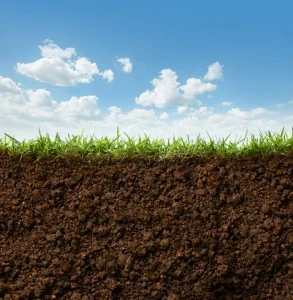Liming your lawn is an important–and often overlooked–part of keeping your grass in good condition. Lime can help bring back your lawn’s vibrance if the soil has dropped out of its ideal pH zone. Used to neutralize acidic soil, lime is not always necessary for healthy lawns. Read on to learn how to tell when to lime your lawn.
Do You Need to Lime your Lawn?
The best way to determine whether your lawn needs liming is by performing a soil test. Once your lawn’s pH levels are revealed, treating your soil to help it reach its ideal levels will help the turf absorb nutrients more effectively.
Applying lime to your lawn is a common tactic for changing the soil’s pH level. Soil pH measures its alkalinity or acidity. Acidic, sour soil has a pH below the desired range. Lime may be necessary if your test reveals pH levels below the optimum levels of 6.0 to 7.0. If your pH is below 6.0, your soil is preventing important nutrients from being absorbed by the grass roots, causing turf to lose color and limiting its ability to recover from stresses like heat and drought conditions.
Some soil is naturally acidic, but others can be acidified gradually because of natural leaching. The most common causes of leaching are excessive rainfall, irrigating with acidic water, and certain fertilizers.
What is Lime?
Agricultural lime’s main component is calcium carbonate. Commonly available in pellet or powder form, it is made of ground limestone or chalk. There are several types of lime on the market, so a soil test is necessary to determine which kind will benefit your lawn. Calcitic lime adds calcium to the soil while dolomitic lime boosts your lawn’s magnesium content.
When to Apply Lime
Lime is ideally applied to lawns in spring or fall, but can be applied to your lawn at any time of the year, as long as the soil isn’t frozen.
How Much Lime is Necessary?
The soil test you administer will indicate how many pounds of calcium carbonate you should apply per square foot. Read the instructions for use on the bag and apply the lime to your grass with a lawn spreader. Pelletized lime comes in the form of dust-free pellets that dissolve with precipitation while pulverized lime can be powdery and messy, but less expensive.
Still unsure about whether you need to lime your lawn? Call our qualified experts today at 419-529-5296. We’re here to help make your lawn look its best.



Comments (0)
Thanks for your comment!
Thanks for your feedback! Your comments have been successfully submitted! Please note, all comments require admin approval prior to display.
Error submitting comment!
There is a problem with your comment, please see below and try again.